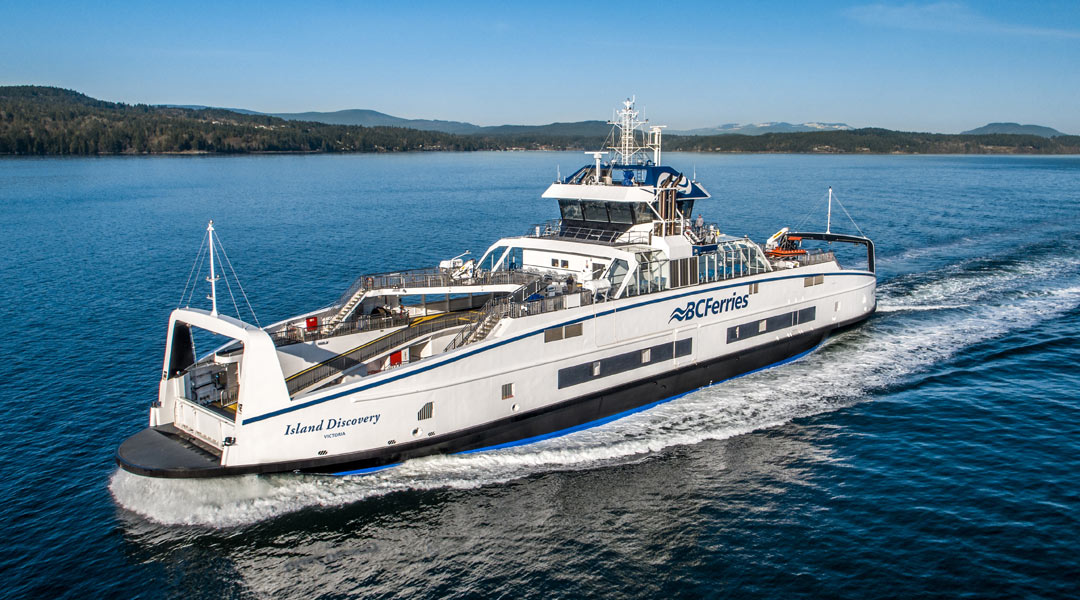Latest news
All six battery hybrid electric Island Class ferries have arrived in BC and will be providing service along our coast.
In January 2023, round trip service between Campbell River – Quadra Island will grow from up to 18 trips to up to 29 per day with the introduction of the Island Nagalis and Island K’ulut’a to deliver more service at peak times and more capacity overall. The new schedule was developed in consultation with the community and the Campbell River – Quadra Island – Cortes Island Ferry Advisory Committee through a public engagement process carried out in the spring of 2021.
Individual Island Class vessels won't be permanently assigned to a region, territory or route. The vessels will be repositioned to replace each other during planned maintenance periods or as required. Having more ferries of the same build allows us to provide a more efficient and consistent experience for customers.
Online schedules for this new, two-ship service are available here
Learn more about Island Class ferries coming to the fleet in 2022
Visit our Island Class playlist on YouTube to learn more about these new state-of-the-art ferries and watch key milestones of the Island Class ferry replacement program.
About the Island Class
The Island Class ferries carry 47 vehicles and are double-ended for easy loading and unloading. The ferries also feature wide vehicle lanes, dedicated pedestrian paths, and bicycle parking spaces.Passenger lounges and washrooms are situated on the main deck for easy access. Lounge areas have been built with your comfort in mind, with a variety of seating choices and charging stations. A sundeck with seating, windbreaks, and an accessible washroom will provide a comfortable space to sit outdoors.
The Island Class are battery-equipped ships designed for full electric operation. The ships are fitted with hybrid technology that bridges the gap until shore charging infrastructure becomes available. From the exterior details to the engines, the design of the new vessels reduces underwater radiated noise, lowers emissions and improves the customer experience on board.
The Island Class ferries will service the following routes:
- Powell River – Texada Island (in service)
- Port McNeill – Alert Bay – Sointula (in service)
- Nanaimo Harbour – Gabriola Island (two ferries - in service)
- Campbell River – Quadra Island (two ferries - January 18, 2023)
Key features
- Electric power and propulsion systems
- Battery-hybrid power systems improve efficiency and reduce emissions during interim operations
- Exhaust system reduces NOx emissions through selective catalytic reduction
- Twin propellers designed to reduce underwater radiated noise
- Designed to be fully accessible without elevators, reducing energy consumption, operating cost and complexity
- Vessel completely outfitted with LED lighting
- Heat recovery system uses waste thermal energy to heat vessel
- Low friction and biofouling resistant hull coating reduces fuel consumption
- Comfortable passenger lounges and solariums for great views along the journey
We are standardizing our fleet
The Island Class ferries are another step towards standardizing our fleet. Standardization helps us:- Dramatically improve resiliency in our fleet by allowing us to move ferries around to replace each other during refits, repairs, and unexpected challenges.
- Provide a more consistent travel experience for our customers.
- Reduce logistical, operational, training, and maintenance costs.



